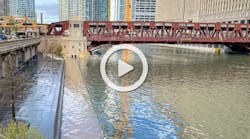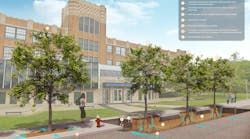Louisiana Groups Announce Atchafalaya River Project
BATON ROUGE, LA – The Coastal Protection and Restoration Authority (CPRA), The Nature Conservancy (TNC), and the US Army Corps of Engineers (USACE) have announced the creation of the Sustainable Rivers Program (SRP) Atchafalaya River Project. The SRP is a national program in which the USACE partners with TNC to develop environmental flow regimes to benefit ecosystems downstream of Corps-operated structures. As the lead for the Atchafalaya Basin Program, CPRA will participate in the effort and serve in an advising role.
The partners will explore environmental flows of the Atchafalaya River at the Old River Control Structure. TNC will convene relevant scientists and stakeholders to identify and discuss potential environmental flows in the Atchafalaya Basin while the local New Orleans district of the USACE, the owner and operator of the Old River Control Structure, will conduct modeling to inform future operations of the structure.
TNC Director of Freshwater & Marine Science, Dr. Bryan Piazza, said that project partners hope to benefit the Atchafalaya Basin by implementing an experimental flow within the currently-authorized flow rate. The existing authorization allows 30% of the total combined flow of Red River and Mississippi River’s volume to be diverted to the Atchafalaya River.
“Working with the Corps and the State of Louisiana on this project is an amazing opportunity to achieve landscape-scale restoration in a place of global ecological significance,” Piazza said. “Work must be done within the program’s three-year timeline, with experimental flows identified in year one, modeling conducted in year two, and implementation accomplished in year three. Throughout the process, scientists and stakeholders will be engaged and the public will be given opportunities for input.”
Monitoring data collected during the experimental flow will help inform the USACE decision as to whether a flow regime is selected and recommended for incorporation into the operation of the Old River Control Structure.
“This program is an important effort within a larger strategy the state of Louisiana is pursuing to address the health of the Atchafalaya Basin,” said Chip Kline, Executive Assistant to the Governor for Coastal Activities and CPRA Chairman. “We look forward to expanding our partnership with the Corps and our non-profit partners to restore and enhance the Atchafalaya – a national treasure.”
CPRA Executive Director Bren Haase agrees, saying he welcomes the opportunity to halt or reverse the declining state of this vast ecosystem.
“We are pleased to be a partner in this SRP project,” said Haase. “The Atchafalaya River Basin is an incredible natural, cultural, and economic resource for the State of Louisiana. The ecological health of the Atchafalaya Basin has positive implications not just for the basin, but also for our coast.”
Mark Wingate, Deputy District Engineer for the USACE New Orleans District, commented, “For nearly 60 years, the Corps of Engineers has operated the Old River Control Structure to ensure the Mississippi River stays on its present course. This partnership between the Corps, CPRA, and TNC provides an opportunity to investigate whether the structure can also help to improve the health of the Atchafalaya Basin while achieving its authorized mission."
Created in 2002, the SRP is a partnership between TNC and USACE. The goal of the SRP is to modify dam operations and enhance habitats for the plants and animals and protect communities from flooding while simultaneously maximizing efficiency for hydropower and navigation operations. In 2019, SRP enrolled 16 rivers in the United States with work at 66 dams and reservoirs and positively impacted over 5,000 river miles. 2020 brought additional funding to the program and the work has since expanded to 14 more rivers, 24 new dam and reservoir sites, and an additional 6,000 river miles.
Source: CPRA


